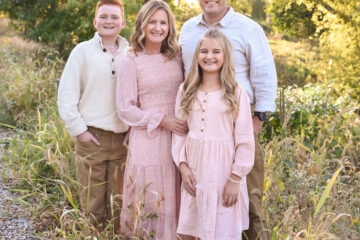By Emily Kestel
There is a record proportion of Iowa women running for state and federal office this year – barely.
Of the 217 candidates running for federal and state legislative office this year, 78 – or 35.94% – are women. In 2020, when the previous record was set, that rate was 35.17%.
According to a Carrie Chapman Catt Center for Women and Politics analysis, Iowa has seen steady increases in the proportion of female candidates in recent years. When the Catt Center began tracking data in 2000, women made up 18% of candidates in the state’s general election.

“Nationally, I would say there is steady but slow progress towards women’s full representation in government. And at the state level, I would say that Iowa has made great strides in a relatively short amount of time,” Karen Kedrowski, director of the Catt Center, said.
In the state legislative races, 20 women are running for Iowa Senate seats. One district features two women running against each other. In the other chamber, 50 women are running for Iowa House seats, and three districts feature races where two women are running against each other.
In the gubernatorial race, for the first time Iowa is guaranteed to have a female governor as Republican incumbent Gov. Kim Reynolds and Democratic nominee Deidre DeJear face each other.
With all that being said, perhaps it is not the sheer number of women running for office that is newsworthy this year, but that it is becoming normal.
Kedrowski said when we’ve normalized women running for and holding office, female candidates are then able to dedicate more time to the issues. “It allows the candidates who are women to move beyond having to answer questions like ‘What’s it like to be a woman on the campaign trail?’ to talking about issues, plans and ideas.”
On the flip side, completely ignoring gender in the political arena shouldn’t be the goal.
In an Iowa Capital Dispatch article, Kelly Dittmar, director of research at the Center for American Women and Politics, said that in past elections, much of the attention on female candidates was centered on the number of women running for and winning office. This cycle, she said, there’s less attention being paid to women running, a decision that “really ignores the important ways in which gender is still shaping women’s decisions to, and experiences while running.”
When asked about why representation of women in political office is still an issue worth talking about, Kedrowski summed it up: “Women remain underrepresented in public life.”
Who’s running?
Seventy women are running for seats within the Iowa state Legislature. Forty-six of them are Democrats and 24 are Republicans. (See names and party affiliations in a Catt Center analysis.)
Five women are running for three seats in the U.S. House of Representatives: Mariannette Miller-Meeks and Christina Bohannan in the IA-01 race, Ashley Hinson and Liz Mathis in the IA-02 race, and Cindy Axne in the IA-03 race. Three are Democrats and two are Republicans.
Two women are running to be governor of Iowa: Gov. Kim Reynolds and Deidre DeJear. Across the country, Arizona, Oregon, Alabama and Michigan also have contests between two women, the most in history.
Republican Brenna Bird is running to become the state’s attorney general.
No Iowa women are on the ballot for the U.S. Senate.
What does the national picture look like?
According to an analysis by the Center for American Women and Politics, there are a record number of women nominees in gubernatorial and state legislative races.
Twenty-five women are major-party nominees for governor, which is a 56% increase from the previous record of 16, set in 2018. Five women are running to be their state’s first elected female governor. Potentials for other firsts include the first Black woman governor and the first openly lesbian governor.
In U.S. Senate races, 20 women are major-party nominees, short of the previous record of 23, which was set in 2018. As it stands, 17 states have never been represented by a woman in the Senate, but that could change in Alabama, Connecticut, Oklahoma and South Carolina this year.
For U.S. House races, 259 women are major-party nominees, short of the previous record of 298, set in 2020. Three states have never been represented by a woman in the House, including Mississippi and Vermont, who have women on the ballot.
At 37 nominees, there are a record number of Latina and Hispanic women on the ballot for U.S. House races this year.
What are the issues at stake?
Women have voted at higher rates than men in every presidential and midterm election since 1984.
Generally speaking, women running for public office are more likely to support social welfare spending, education, and public health or safety measures, Kedrowski said.
“Abortion, or reproductive health, however you want to frame it, is more likely to be a motivating issue for Democratic women than it is for Republican women,” she said.
Several polls, including one by the Kaiser Family Foundation, have found that abortion is a crucial motivating factor for Democratic-leaning voters this year. The poll revealed the Supreme Court’s decision to overturn Roe v. Wade “has put a fire under Democratic voters, with more than half claiming they are more motivated to vote than in previous elections.”
Kedrowski said Iowa is out of step with what’s been seen in other states where an influx of young female, first-time voters are registering Democratic as a result of the Supreme Court decision. “In fact, what we have seen is there are now more Republican voters than there are Democratic voters [in Iowa.]”
Related stories:
The history of Iowa women in politics may surprise you. Read up on 10 fast facts
Is 29% acceptable? A look at the representation of women in Iowa politics
All civic boards and commissions in Iowa must be gender balanced. Are they?


